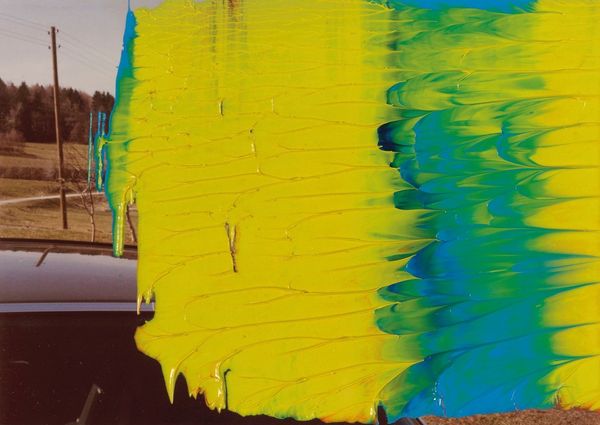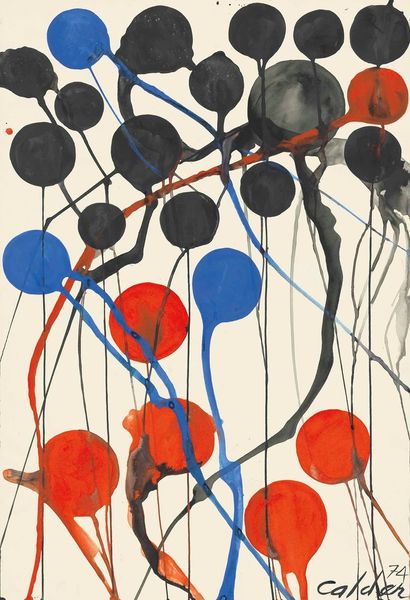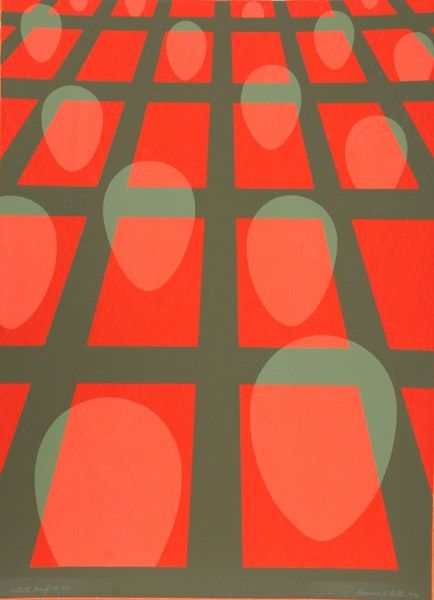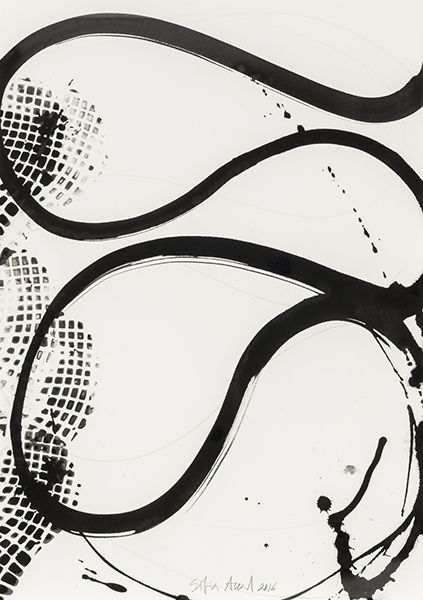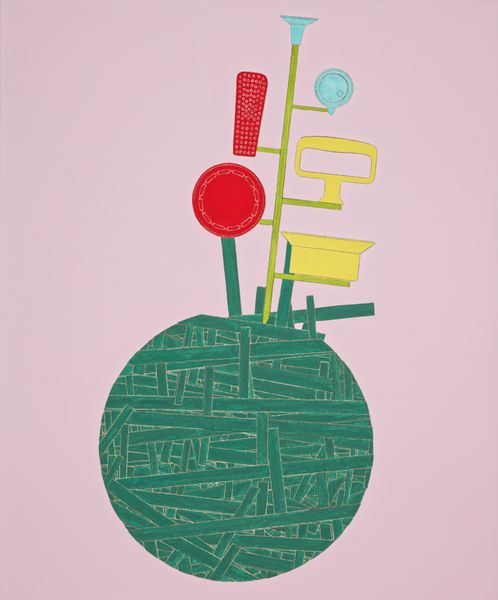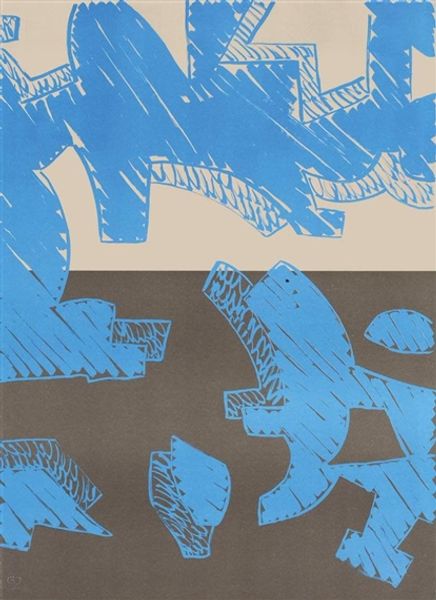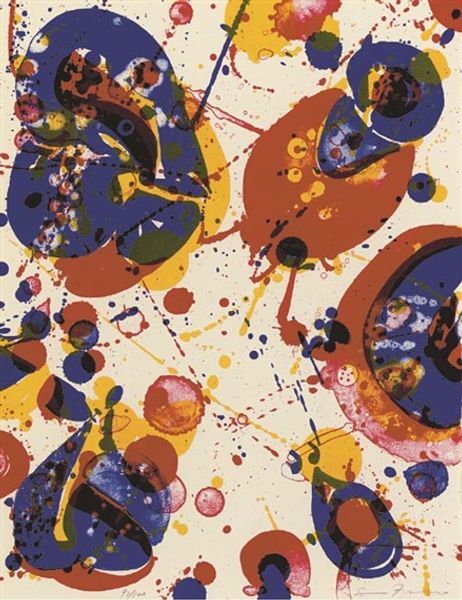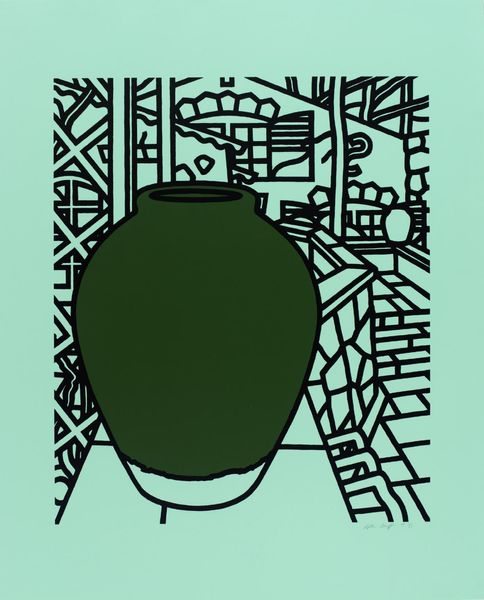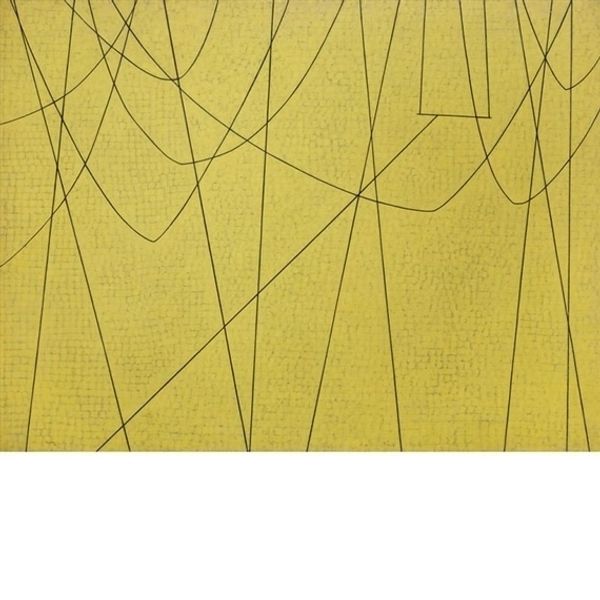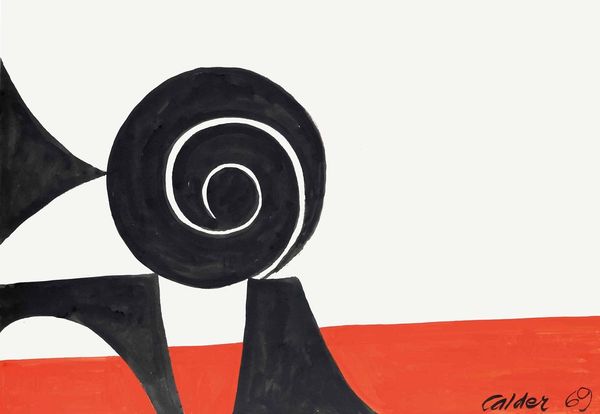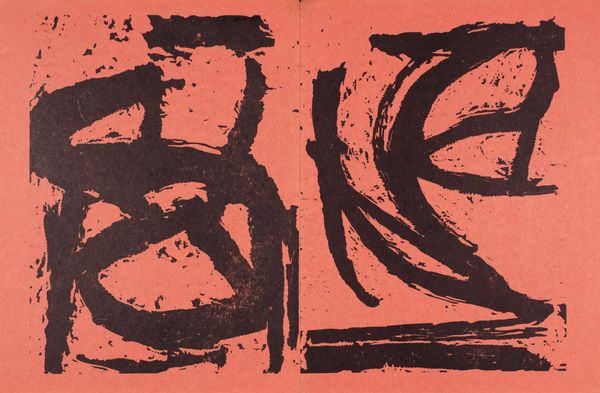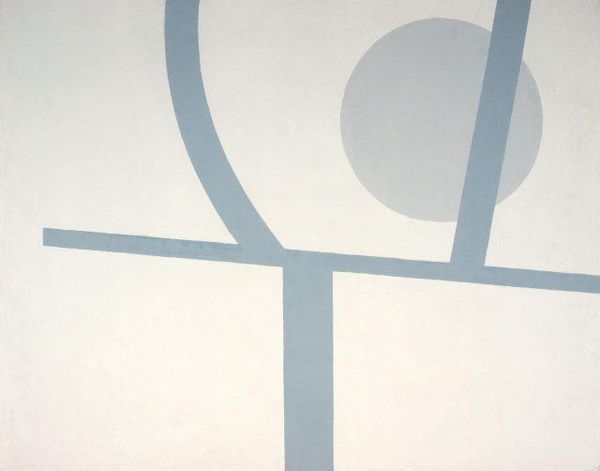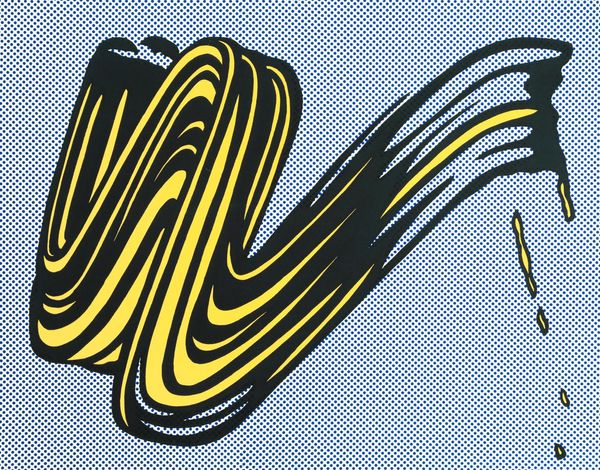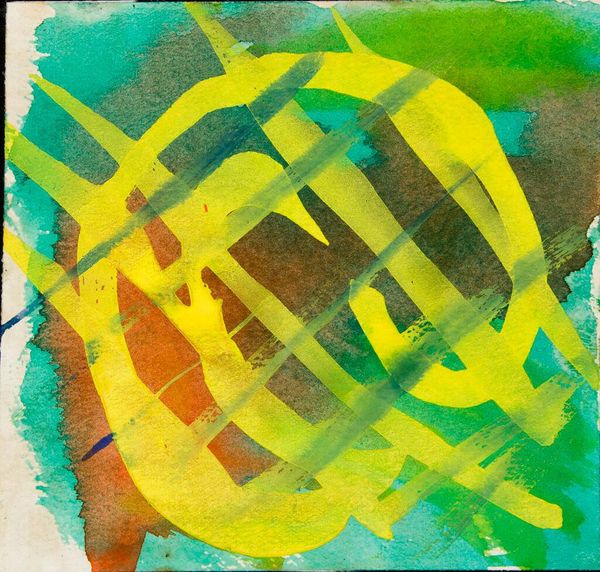
Copyright: Modern Artists: Artvee
Curator: Looking at this monochromatic print, what's your initial reaction? I'll note that we're examining Andy Warhol's "Volkswagen Bug" from 1977, a screenprint in acrylic paint. Editor: Visually, it feels both nostalgic and oddly futuristic, like a dream of consumerism. The sheer vibrancy of that singular green flattens the image, stripping away any sense of depth or reality. It feels more like an idea of a car than a car itself. Curator: That speaks to Warhol's larger project, doesn't it? Elevating the everyday, the mass-produced, into the realm of "art." The VW Bug was ubiquitous, a symbol of post-war consumer culture accessible to the masses. Its inclusion, and his wider embrace of advertising imagery, challenged the traditional hierarchies within the art world, right? Editor: Absolutely. Consider the Beetle’s iconic status – a ‘people’s car,’ originally commissioned by the Nazi regime, it then became a global symbol of counterculture. It embodies resilience, adaptability, almost a visual mantra for the late 20th century. Do you think Warhol consciously drew from that duality? Curator: I'd argue that Warhol was deeply attuned to the semiotics of the object, how historical weight and social narrative intersect. The flattening of the image further highlights the pervasiveness of consumer goods, minimizing historical baggage. It becomes pure image, shorn of specific cultural identity through this high key single color choice. Editor: The monochrome acts almost as a symbolic cleanser, doesn't it? Simplifying the subject down to its most essential form. Green, in this case, could signal the ecological movement rising in the late 70s, a tension between consumerism and environmental awareness, maybe? Curator: That’s certainly plausible. Warhol was acutely aware of prevailing anxieties, channeling them into his work. But the ambiguity is equally crucial. This “Bug” serves as both a mirror reflecting consumer desires and a critique of its cultural saturation, and the way those mass desires flatten real history into product. Editor: The cultural echoes resonate. This image, rendered in that signature Warhol style, continues to ask questions about identity, commodity, and how we assign value. Curator: Precisely, this work's value rests, ultimately, on the social, cultural, and industrial factors Warhol critiqued so subtly. The painting then functions as a visual touchstone that lets us look back and understand, in part, how and why the mundane object becomes an ideal, both here in the museum space and further out into our social lives.
Comments
No comments
Be the first to comment and join the conversation on the ultimate creative platform.
